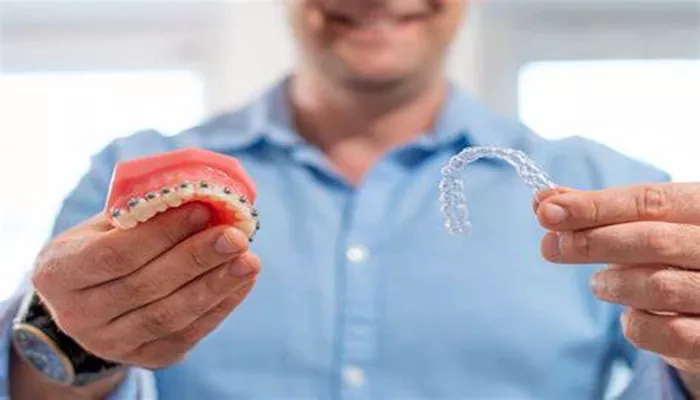Dental treatment and orthodontic treatment are two essential aspects of oral health care. While both aim to improve the condition of teeth and gums, they serve different purposes and involve distinct procedures. Understanding the differences between these two types of treatments is crucial for anyone seeking to maintain or enhance their oral health. This article will explore the definitions, purposes, methods, and outcomes of dental and orthodontic treatments in detail.
What Is Dental Treatment?
Dental treatment encompasses a wide range of procedures aimed at maintaining and restoring oral health. This includes the overall care of teeth, gums, and the mouth. Dentists are trained to diagnose and treat various dental issues, including cavities, gum disease, and tooth decay.
Here are some key aspects of dental treatment:
Types of Dental Treatments
Preventive Care: This includes routine check-ups, professional cleanings, and fluoride treatments. Preventive care aims to prevent dental problems before they occur.
Restorative Treatments: These procedures restore the function and appearance of damaged teeth. Common restorative treatments include:
Fillings: Used to treat cavities by filling the space after decay removal.
Crowns: Caps placed over damaged teeth to restore their shape and function.
Bridges: Used to replace missing teeth by anchoring artificial teeth to adjacent natural ones.
Dentures: Removable appliances that replace missing teeth.
Endodontic Treatments: This includes root canal therapy, which is performed when the pulp of a tooth becomes infected or inflamed.
Periodontal Treatments: These focus on treating gum disease through scaling, root planing, and surgical interventions if necessary.
Oral Surgery: Procedures such as tooth extractions or corrective jaw surgery fall under this category.
Cosmetic Dentistry: This includes services aimed at improving the appearance of teeth, such as whitening, veneers, and bonding.
SEE ALSO: How to Remove Orthodontic Wires: A Step-by-Step Guide
Goals of Dental Treatment
The primary goals of dental treatment include:
Preventing oral diseases
Restoring damaged teeth
Maintaining overall oral health
Enhancing the aesthetic appearance of smiles
What Is Orthodontic Treatment?
Orthodontic treatment is a specialized branch of dentistry focused on diagnosing, preventing, and correcting misaligned teeth and jaws.
Orthodontists are dentists who have completed additional training in this field. Their primary goal is to achieve proper alignment of the teeth and jaws for both functional and aesthetic benefits.
Types of Orthodontic Treatments
Braces: Traditional metal braces consist of brackets attached to each tooth with wires that gradually move the teeth into proper alignment.
Clear Aligners: Brands like Invisalign use a series of custom-made clear plastic trays that fit over the teeth to gradually shift them into place.
Retainers: After orthodontic treatment is completed, retainers are used to maintain teeth in their new positions.
Palatal Expanders: These devices widen the upper jaw to create more space for crowded teeth.
Headgear: An external appliance used to correct bite issues by applying pressure on the upper jaw.
Goals of Orthodontic Treatment
The main objectives of orthodontic treatment include:
Correcting misaligned teeth
Improving bite function (occlusion)
Enhancing facial aesthetics
Preventing future dental problems related to misalignment
Key Differences Between Dental Treatment And Orthodontic Treatment
While both types of treatments are essential for maintaining oral health, they differ significantly in their focus and methods:
1. Focus of Treatment
Dental Treatment: Primarily concerned with overall oral health, including preventive care, restoration of damaged teeth, and treatment of diseases affecting the gums and oral tissues.
Orthodontic Treatment: Specifically focuses on correcting misalignment issues with teeth and jaws to improve function and aesthetics.
2. Educational Background
All orthodontists are dentists; however, not all dentists are orthodontists. Orthodontists undergo additional training (typically 2-3 years) after dental school that focuses specifically on orthodontics.
3. Types of Procedures
Dental Procedures: Include fillings, crowns, extractions, root canals, cleanings, and cosmetic enhancements.
Orthodontic Procedures: Include braces application, clear aligners fitting, retainers provision, and jaw correction devices.
4. Duration of Treatment
Dental treatments can often be completed in a single visit (e.g., fillings or cleanings), while orthodontic treatments typically require months or years to achieve desired results due to gradual tooth movement.
5. Maintenance After Treatment
After dental treatments like fillings or crowns, regular dental check-ups are necessary to monitor oral health.
After orthodontic treatment, patients must wear retainers as prescribed to maintain tooth position.
The Interplay Between Dental And Orthodontic Treatments
Dental treatments often complement orthodontic care. For example:
Before starting orthodontic treatment, a dentist may need to address any existing dental issues such as cavities or gum disease.
After orthodontics is completed, patients may require dental services for cosmetic enhancements or restorations if any damage occurred during treatment.
Importance of Both Treatments for Oral Health
Both dental and orthodontic treatments play vital roles in maintaining optimal oral health:
Preventive Care: Regular visits to a dentist can help identify potential issues early on before they escalate into more significant problems requiring extensive treatment.
Functional Benefits: Proper alignment achieved through orthodontics can improve chewing efficiency and reduce strain on jaw muscles.
Aesthetic Improvements: Both types of treatment can enhance the appearance of smiles, boosting self-esteem and confidence.
Long-term Health Outcomes: Good oral health practices can prevent systemic health issues linked to poor oral hygiene, such as heart disease or diabetes complications.
Conclusion
In summary, dental treatment and orthodontic treatment serve distinct but complementary roles in maintaining oral health. While dental treatment focuses on preventing and treating diseases affecting the teeth and gums, orthodontics specializes in correcting misalignments for improved function and aesthetics. Understanding these differences can help individuals make informed decisions about their oral health care needs.

